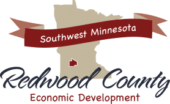High-speed internet is no longer a luxury, rather it is a necessary utility. Access to broadband in rural areas is linked to increased job opportunities and population growth, higher rates of new business development, higher home values, and lower unemployment rates.
Every household, business, and individual utilize the internet in various ways. Access to high-speed internet is integrated in much of our day-to-day activities; and the COVID pandemic showcased the inequities which exist across the state, of those with and without high-speed internet. More people are teleworking than ever before, students utilize the internet to participate in e-learning or complete homework, more businesses are offering their goods and services in an online format, virtual medical appointments are being held, and church services are available to stream.
The average household now has 15 devices in their home. Whether you have a smart appliance (washer/dryer, refrigerator stove, etc.), garage door app, security system, or utilize a personal computer, laptop, smart phone, or tablet - you are using the internet in multiple ways, multiple times in a day.
According to the Federal Communications Commission (FCC), Broadband or high-speed Internet access allows users to access the Internet and Internet-related services at significantly higher speeds than those available through "dial-up" services. Broadband speeds vary significantly depending on the technology and level of service ordered. Broadband services for residential consumers typically provide faster downstream speeds (from the Internet to your computer) than upstream speeds (from your computer to the Internet).
Learn more at Federal Communications Commission » Getting Broadband Q&A
A gig is an internet speed of 1,000 megabytes per second (Mbps) download speed or 1 gigabit per second (Gbps). The average household in Redwood County has access to internet speeds of about 25 Mbps download and 3 Mbps upload (25/3 Mbps). While these speeds may work for some, it may be limiting for others. At this time, a fixed wireless system or DSL service cannot produce a gig of speed.
Fiber optic technology converts to light electrical signals carrying data and sends the light through transparent glass fibers about the diameter of a human hair. Fiber transmits data at speeds far exceeding current DSL or cable modem speeds. The actual speed you experience, however, will vary depending upon a variety of factors, such as how close to your computer the service provider brings the fiber and how the service provider configures the service. The same fiber providing your broadband can also simultaneously deliver voice (VoIP) and video services, including video-on-demand. Simply, a fiber network is future proof. It will serve the next generation by providing consistent and reliable service, with the capacity of delivering increasing speeds to ten gigs (10,000 Mbps).
A gig of internet speed may not be necessary today, it will likely be in the future. The rate of growth in technology require communities to be equipped to adapt to those changes, which will include an increase of bandwidth.
Utilizing a device connected to your home wifi system and click on this link https://mn.gov/deed/programs-services/broadband/checkspeedmn and click ‘TAKE THE INTERNET SPEED TEST’ button. You will be brought to https://www.speedtest.net, click ‘GO’, and it will begin measuring your download and upload speed. This will take about 30 seconds to collect.
The Emergency Broadband Benefit is an FCC program to provide financial support to families and households unable to afford Internet. This new benefit will connect eligible households to jobs, critical healthcare services, virtual classrooms, and so much more.
The Emergency Broadband Benefit will provide a discount of up to $50 per month towards broadband service for eligible households and up to $75 per month for households on qualifying Tribal lands. Eligible households can also receive a one-time discount of up to $100 to purchase a laptop, desktop computer, or tablet from participating providers if they contribute more than $10 and less than $50 toward the purchase price.
Learn more by visiting the FCC - Emergency Broadband Benefit website https://www.fcc.gov/broadbandbenefit or contact your local internet service provider.
Possibly. Redwood County currently has two internet service providers actively planning and constructing fiber-to-the-premises networks between now and 2026. These networks take significant investments of time and money to build. Redwood County Economic Development Authority is currently working with both providers to provide resources needed to assist and support construction.
To learn more projects, contact Arvig https://www.arvig.com/contact-us/ or Nuvera https://nuvera.net/contact-us/.
Arvig has scheduled fiber-network construction projects between now and 2026, in a variety of areas within Redwood County through the Federal Communications Commission (FCC) Alternative Connect America Cost Model (ACAM) program. The goal of the program is to provide speeds of at least 25 Mbps download and 3 Mbps upload to rural areas in the Arvig service region. The mailing received is to pre-register to receive fiber to your structure (home/business). This is a unique opportunity to access the fiber technology. Visit Arvig’s website which outlines additional details about the program, construction timelines, and contact information. https://www.arvig.net/support/faq/internet/a-cam
- Minnesota Office of Broadband https://mn.gov/deed/programs-services/broadband
- Minnesota Broadband Goals https://mn.gov/deed/programs-services/broadband/goals
- View Broadband Maps https://mn.gov/deed/programs-services/broadband/maps
- Minnesota Rural Broadband Coalition https://mnruralbroadbandcoalition.com
- Contact the Redwood County Economic Development Authority at (507) 637-4016
